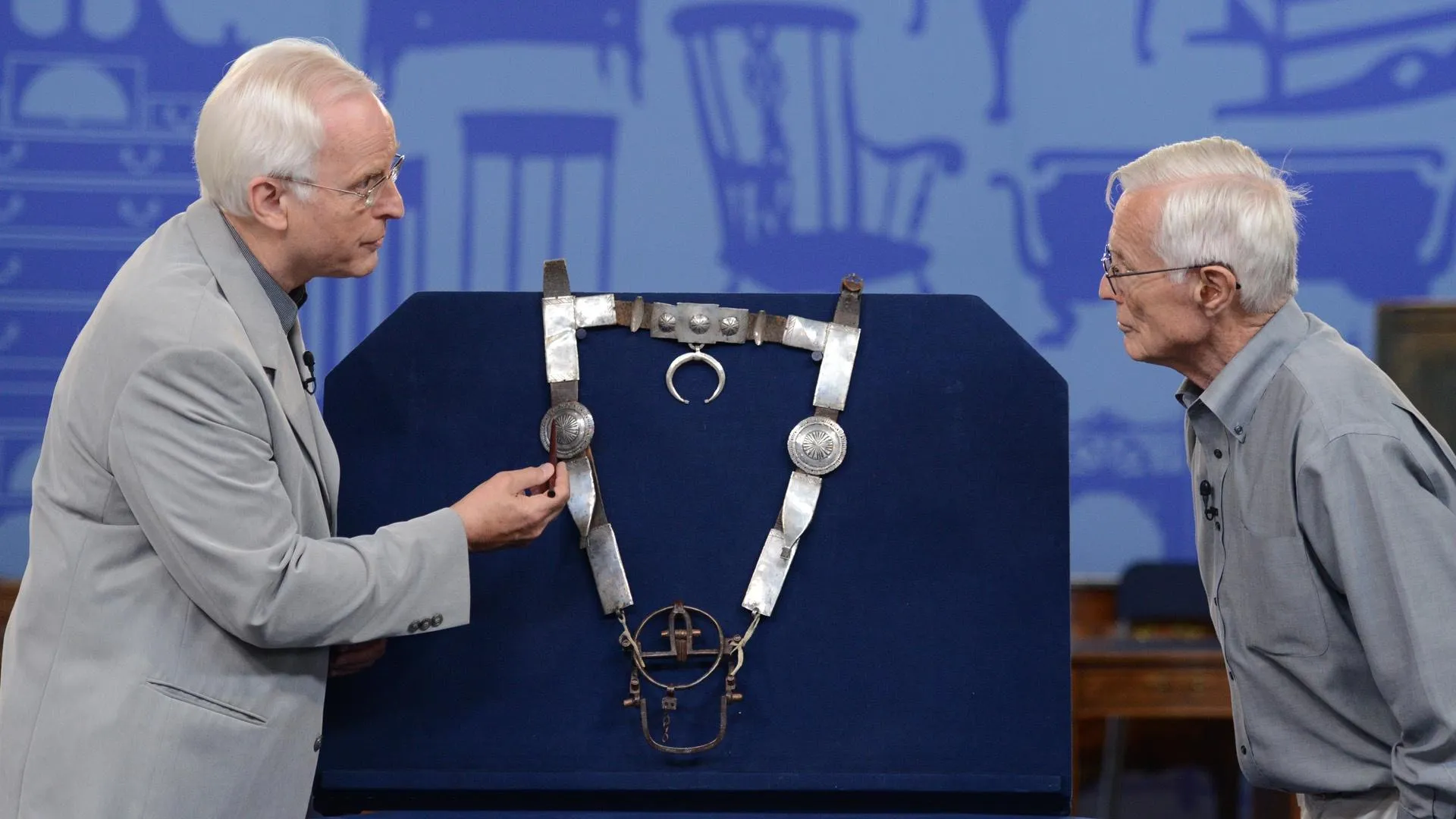GUEST: My wife and I have been garage sale-ing for a long time and never really came across something quite this unique, something that I really didn't understand. I didn't know who made it, when it was made, anything like that, but I really liked it.
APPRAISER: And where was the garage sale?
GUEST: In Gallup, New Mexico.
APPRAISER: Okay, Gallup, okay. What'd you pay for it?
GUEST: $50. But I couldn't figure out whether this was Native American or not.
APPRAISER: It's a remarkable piece. I took this to my colleagues at the tribal arts table and they'd never seen this either. It's clearly a piece of folk art, but the question is, who made it? Is it an American Indian piece or is it an Anglo piece? The beads on his sleeve here are very, very tiny. Those are some of the earliest kinds of beads that became available to American Indians, particularly out on the plains. And these don't follow too far behind. These were typical beads from the 1860s. This sort of kidney-colored bean is a little bit later. So we can start with saying that it was probably made in the 1860s or 1870s, and that fits in very well with the figure. The figure is wearing a sort of a standard Civil War or right after the war frock coat. He's an officer. We know that because he's wearing this scarlet sash that only an officer would wear. He's standing underneath these great flags with a patriotic shield and crossed flags here. He has his folding camp chair, which is very typical for officers to have had, and then there's a small artillery piece over here. Here's the interesting thing: when I first saw this, I said, "Oh, my gosh, here is a beaded piece of work "that was made in the Southwest because he's clearly standing on a Navajo-style weaving." The red wool yarns here are probably dyed with a substance called cochineal, which comes from ground-up insects. It produces a vivid red. It was a kind of dye that was used before aniline or chemical-based dyes were invented. So we're suggesting that there's a possibility that this wool is some really early wool. And that's the kind of early wool that would have been used here in the Southwest in the 1850s and 1860s. So the question is, who made this thing? If it was made here in the Southwest, the Ute in southern Colorado and throughout Colorado could have done this, or the Navajo could have done this. The Navajo were doing beadwork in the early 1860s-- not very much. But we can't say which is which because the Ute had Navajo blankets. They were trading with the Navajo. So, is it American Indian or is it an Anglo person? We don't know. This could go either way. It could go in an Americana auction with folk art or it could sell in an auction with other American Indian art. In either case, I think that a safe sort of auction estimate for the piece would be somewhere between $5,000 and $7,000.
GUEST: Really? Just made my day.











